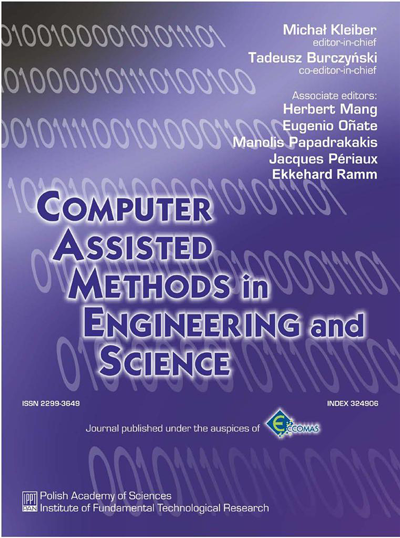MPCA for flight dynamics parameters determination
Abstract
Aircraft have become increasingly costly and complex. Military and civil pilots and engineers have used flight simulators in order to increase safety of flight through the training of crew. It is necessary to calibrate the simulation for simulators to have good adherence to reality, that is, to identify the parameters that make the simulation as close as possible to the actual dynamics. After determining these parameters, the simulator will be ready to be used in human resources training or assessing the aircraft. Parameter identification characterizes the aerodynamic performance of the aircraft and can be formulated as a problem optimization. The calibration of a dynamic flight simulator is achieved by a new meta-heuristic called multiple particle collision algorithm (MPCA). Preliminary results show a good performance of the employed approach.
Keywords
light dynamic, parameter identification, multiple particle collision algorithm (MPCA),References
[1] H.F. Campos Velho, F.M. Ramos. Numerical inversion of two-dimensional geoelectric conductivity distributions from electromagnetic ground data. Brazilian Journal of Geophysics, 15(2): 133–143, 1997.[2] E.S. Chalhoub, H.F. Campos Velho. Estimation of the optical properties of sea water from measurements of exit radiance. Journal of Quantitative Spectroscopy & Radiative Transfer, 72(5): 551–565, 2002.
[3] S. Stephany, H.F. Campos Velho, F.M. Ramos, C.D. Mobley. Identification of inherent optical properties and bioluminescence source term in a hydrologic optics problem. Journal of Quantitative Spectroscopy & Radiative Transfer, 67(2): 113–123, 2000.
[4] G.D. Padfield. Helicopter flight dynamics: the theory and application of flying qualities and simulation modeling. AIAA Education Series, AIAA, Reston, 1999.
[5] G.D. Padfield. Applications of system identification in rotorcraft flight dynamics. Vertica, 13(3): 207–412, 1989.
[6] R. Kumar, R. Ganguli, S.N. Omkar. Rotorcraft parameter identification from real time flight data. Journal of Aircraft, 45(1): 333–341, 2008.
[7] Agard Rotorcraft System Identification. AGARD AR 280, LS 178, 1991.
[8] P.G. Hamel, J. Kaletka. Advances in rotorcraft system identification. Progress in Aerospace Sciences, 33(3–4): 259–284, 1997.
[9] P. Hajela, J. Lee. Genetic algorithms in multidisciplinary rotor blade design, Proceedings of the 36th AIAA Structures, Structural Dynamics, and Materials Conference, New Orleans, USA, 1995.
[10] V.L. Wells, A.Y. Han, W.A. Crossley. Acoustic design of rotor blades using a genetic algorithm, AGARD CP 552, 1995.
[11] P.M.T. Zaal, D.M. Pool, Q.P. Chu, M.M.V. Paassen, M. Mulder, J.A. Mulder. Modeling human multimodal perception and control using genetic maximum likelihood estimation. Journal of Guidance, Control, and Dynamics, 32(4): 1089–1099, 2009.
[12] E.F.P. Luz, Parallel meta-heuristics on the solution of inverse problems [in Portuguese: Meta-heuristicas paralelas na solução de problemas inversos]. PhD thesis, National Institute of Space Research, São José dos Campos, 2012.
[13] R.V. Cruz, Development Dynamic Model for Helicopter Simulators [in Portuguese: Desenvolvimento de um Modelo Dinâmico para Simuladores de Helicóptero]. PhD Thesis, Technological Institute of Aeronautics, São José dos Campos, 2009.
[14] R.V. Cruz, N.S.B. Neto, L.C.S. Góes. Preliminary results of longitudinal helicopter system identification using genetic optimization algorithm. Proceedings of the 5th Brazilian Conference on Dynamics, Control and their Apllications, Guaratinguetá, Brazil, (2006).
[15] R.V. Cruz, L.C.S. Góes. Results of longitudinal helicopter system identification using output-error and both genetic and Levenberg-Marquardt optimization algorithm. Proceedings of the 19th Brazilian Congress of Mechanical Engineering, Bras´ilia, Brazil, 2007.
[16] R.V. Cruz, L.C.S. Góes. Results of short-period helicopter system identification using output-error and hybrid search-gradient optimization algorithm. Mathematical Problems in Engineering, 2010: 17, 2010, Article ID 231594.
[17] J. del Cerro, J. Valero, A. Barrientos. Identification of small unmanned helicopter model using genetic algorithms. Proceedings of the International Conference on Intelligent Robots and Systems, Edmonton, Canada, 2005.
[18] M.B. Tischler, R.K. Remple. Aircraft and rotorcraft system identification. AIAA Education Series, 2006.
[19] R.V. Jategaonkar. Flight vehicle system identification: a time domain methodology. Progress in Aerospace Sciences, Reston, USA, 2006.
[20] R.W. Prouty. Helicopter performance, stability and control. Krieger Publishing Company, Malabar, 2005.
[21] A.K. Cooke, E.W.H. Fitzpatrick. Helicopter test and evaluation. AIAA Education Series, AIAA, Reston, 2002.
[22] W.F. Sacco, C.R.E.A. Oliveira, A new stochastic optimization algorithm based on a particle collision metaheuristic. Proceedings of the 6th World Congress of Structural and Multidisciplinary Optimization, 2005.
[23] W.F. Sacco, D.C. Knupp, E.F.P. Luz, A.J.S. Neto. Particle Collision Algorithm [in Portuguese: Algoritmo de Colisão de Particulas]. Nature Inspired Computational Intelligence Techniques: Applications in Inverse Problems in Radiative Transfer, 2009.




